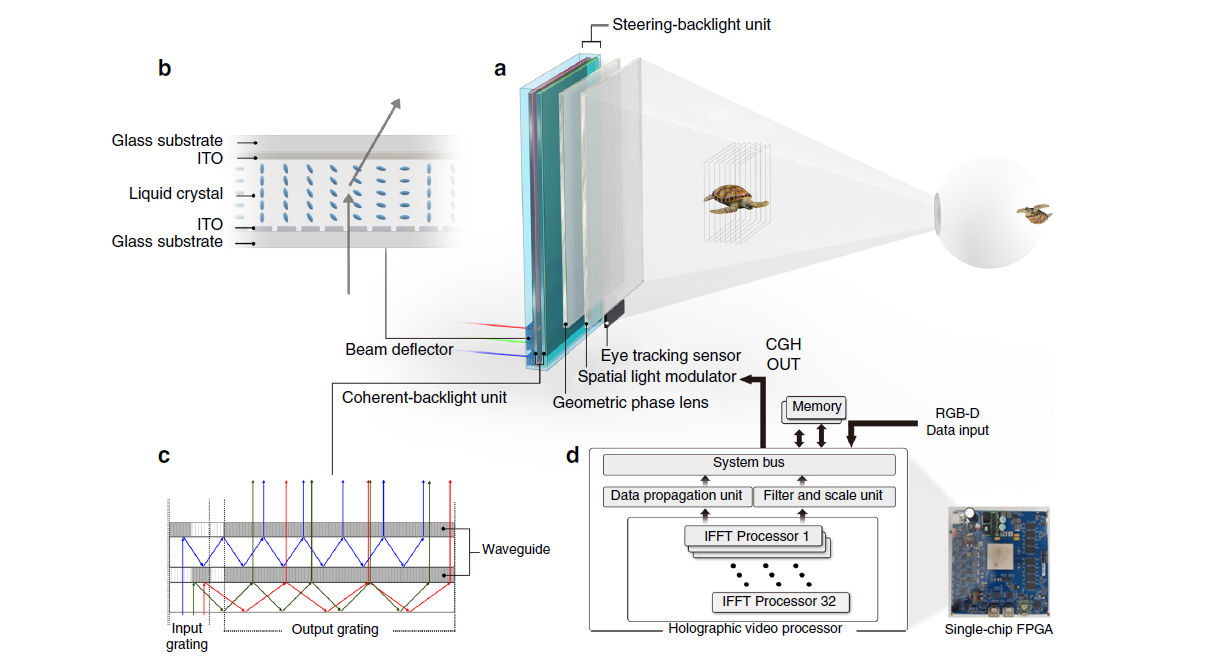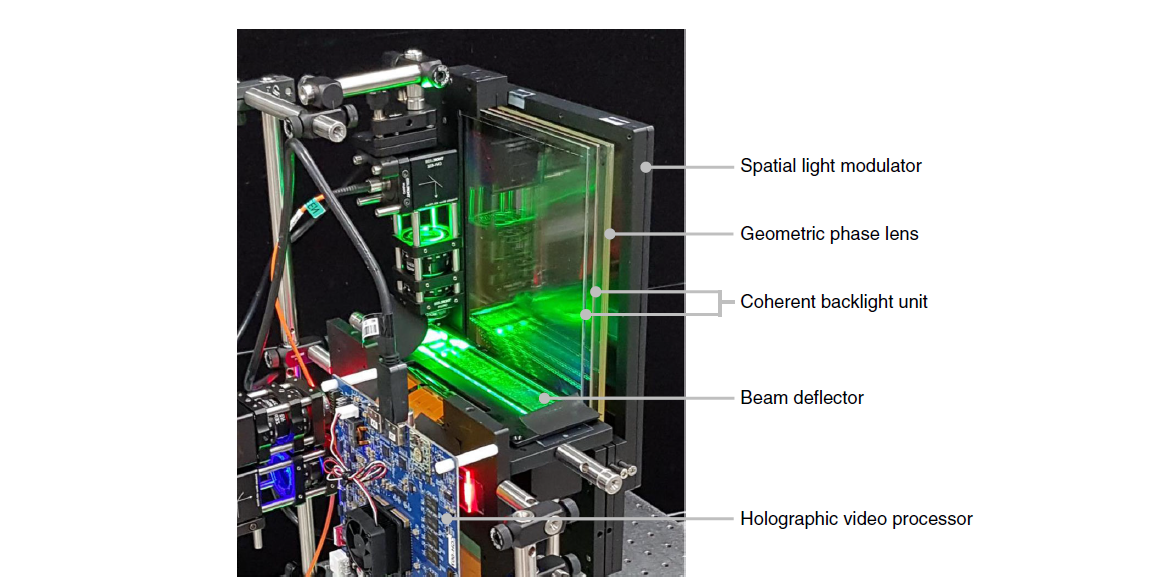
Researchers from the Samsung Institute of Advanced Technology have created a holographic screen with fps up to 30 frames per second. On such a monitor, you can watch a realistic three-dimensional video in the office and at home.
Holographic technology is already over 70 years old. However, until now this technology has not advanced much - for example, there are no holographic displays, which science fiction writers wrote about half a century ago. Mainly for three reasons: the narrow viewing angle of the holography, too bulky optics and high demands on the performance of the equipment that generates the hologram.

Photo: Jungkwuen An et al. / Nature Communications, 2020
The technology is based on such a physical phenomenon as the diffraction of light. With its help, researchers have achieved the creation of volumetric images. By the way, inside the holographic display is a traditional optical scheme that has been known to scientists for many decades. It was simply impossible to put it inside a smartphone or a monitor before. I always had to choose between two evils: the right screen size or a sufficient viewing angle. For example, a 10-inch monitor had a viewing angle of 0.25 degrees. By increasing the angle to a comfortable 30 degrees, the monitor should be narrower than <0.1 inches.
The Samsung physicists were tasked with increasing the viewing angle. The desired results were achieved using light conversion modules. Three beams of light were used for the design - from red, green and blue lasers. They are required to obtain a color image. The light hits the liquid crystal screen - a module, the deviations of which change the direction of the light rays and create a three-dimensional image.

Photo: Jungkwuen An et al. / Nature Communications, 2020
A conventional module can deflect only short beams at relatively large angles. Otherwise, it will be too large to fit into a normal display. To solve this problem, Samsung physicists installed waveguides after the module. Waveguides extend beams with a diameter of 14 x 140 mm to 140 x 230 mm. As a result, the final image on the monitor is generated by a spatial light modulator that converts the beams into a target image.

Samsung display prototype.
Photo: Jungkwuen An et al. / Nature Communications, 2020
In addition to the difficulties with the dimensions of the hologram-generating circuit, scientists have solved the problem of lengthy computations that require high power. So, to create a realistic picture, you need to understand what will be on the retina of the observer's eye, so it is necessary to track the position of the eyes relative to the monitor. The information obtained should serve as a feedback for the holographic system. The fps depends on the frame rate of the system. It was possible to speed up the process due to parallel calculations for both eyes. And another important point - the system can be connected to any modern smartphone.
In the future, the design is planned to be brought to a size suitable for integration into mobile devices.
